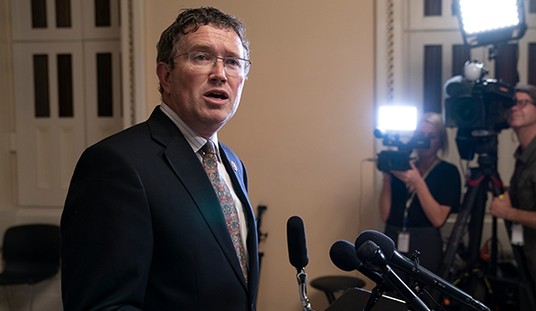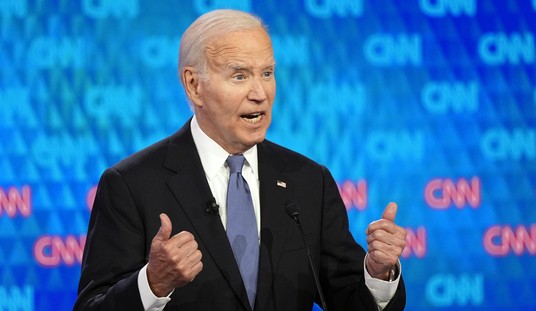The recent presidential nomination of former Georgia congressman Bob Barr by the Libertarian Party puts the political periphery on center stage – at least for a few moments - during this already unusual campaign year. While it’s way too early to even speculate about Barr’s prospects for success, we are reminded that our two-party system hasn’t always functioned without would-be spoilers.
Have third-party candidacies ever made much of a difference?
Actually they have – and, what’s more – there’s at least one case where such a candidacy could have made all the difference. I’ll get to that in a minute.
Probably the most famous attempted political end-run in history was made by a former president – that fact itself lending it credibility. When Theodore Roosevelt failed in his attempt to wrest the Republican nomination away from his successor and former friend William Howard Taft in 1912, he bullied his way onto ballots across the nation on the Progressive Party ticket. He lost the election, but finished in second place and ahead of Taft. Of course, he also ensured that the Democrat Woodrow Wilson would receive a plurality and move into the White House.
In 1924, Robert La Follette ran as a progressive, as well. He lost too, and it didn’t make much of a difference to Calvin Coolidge or the country.
The 1948 campaign played out with the kind of drama we are seeing these days as incumbent Harry S. Truman held onto the Democratic nomination in spite of defections from the left and right. Former Vice President Henry Wallace left (far left) the fold to run as a progressive and Strom Thurmond led the segregation-loving Dixiecrats into the fall campaign.
Recommended
That Truman held on to win a second term is amazing considering the state of his party that year. This should serve as a reminder that party disunity doesn’t necessarily lead to ultimate defeat.
George C. Wallace (no relation to Henry – in fact, no resemblance whatsoever) ran a reasonably effective third-party campaign in 1968, winning five southern states and Ross Perot got a lot of popular votes in 1992 (19% of total) and 1996 (8%). Then there’s Ralph Nader, who captured more than 100,000 votes in Florida in 2000. Few doubt that if he had not run, Al Gore would have received enough of those votes to win the state and therefore the election.
But as I said, there is one third-party candidacy that never actually happened – but could have been very successful if circumstances had allowed it to play out.
Huey Pierce Long was, by 1935, a former Governor of Louisiana (but still very much in control of the statehouse there) and a sitting U.S. Senator. He had campaigned hard for Franklin Roosevelt in 1932, but found himself increasingly disillusioned by the president’s politics and policies. He wanted a much more radical approach to confronting the Great Depression.
The poster-child for populist politics, Long was a master of demagoguery and knew how to manipulate the media of his day – not to mention the masses. He had charisma, savvy, a vast following, and the makings of a national political organization (“Share Our Wealth”) that was becoming a cultural movement.
He was on the cover of Time Magazine in April of 1935 and was described in its pages as “a cross between an unscrupulous Bryan and a political Barnum.” He was quoted as saying: “There positively will be a Share-the-Wealth ticket in the field in the 1936 campaign. No doubt about that. That ticket will be headed by a man who won’t go back on his word.”
Of course, he was talking about himself. He was even writing a book called: “My First Days in the White House.”
The Share Our Wealth Society was based on a sinisterly simplistic and woefully flawed scheme to confiscate the wealth of the richest Americans and distribute it to the rest of the people. The plan included promises of a guaranteed annual income for all Americans. This, of course, resonated with a lot of people – though few took time to do the math. By the summer of 1935 the movement had more than 7.5 million members and 27,000 local chapters from coast to coast.
At 41, Long was the political rock star of his day, one poll finding him to be America’s most attractive man. Tarzan came in second.
Huey Long was also a fierce opponent of Big Oil. His chronic battles in The Pelican State against Standard Oil caused many to see him as a modern day David fighting the Goliaths who taunted them and their hungry stomachs. The Kingfish, as he enjoyed being called, had given them new roads, free text books, and had done so by helping the little guy at the expense of those he painted as big bullies.
The flamboyant Senator was making many people in power very nervous – including Mr. Roosevelt. Some called Long a communist; others thought him to be a fascist. What he really was resembled an unprincipled populist. Many feared, with good reason, that he might become the catalyst for something in this country similar to the völkisch movement that Hitler had used to gain power in Germany.
President Roosevelt actually commissioned a secret poll, one of the first such studies ever done, to get a sense of the political strength of Long and his ideas. He also moved to outflank his potential foe by moving even further to the left, recommending legislation that pandered to the Share-Our-Wealth mindset.
FDR considered Huey Long to be “one of the two most dangerous men in America.” The other, by the way, was Douglas MacArthur.
As the summer of 1935 waned, Huey Long was the undisputed political leader of a growing and vocal group of discontented people, but he wasn’t the only star in the constellation of forces arrayed against the president. Father Charles Coughlin, a vociferous priest who was a master of the air waves speaking to a radio audience of 40 million weekly (this in a day when our country’s population had not yet reached 130 million), was also considering a break with FDR by this time.
The very idea that Long and Coughlin might get together to challenge him from the left clearly concerned Mr. Roosevelt. In early September of 1935, FDR invited the radio priest to his home in Hyde Park, New York in an attempt to keep the popular broadcaster in his camp and avoid a political nightmare in 1936.
By the time Father Coughlin was met by Joseph P. Kennedy (who was being used by FDR as a liaison to Coughlin) at the local train station at 3:00 a.m. on September 10th, the news had long made its way around the country that Huey Long had been shot in Baton Rouge, Louisiana, and was fighting for his life. Coughlin was with the president later that day when word came that Long had died.
That was that.
Father Coughlin did break away from Roosevelt two months later. And in 1936 there was a third party attempt to win the White House. Coughlin teamed with Long’s self-anointed protégé, an anti-Semitic preacher named Gerald L.K. Smith, as well as Francis Townsend, who promoted a scheme to provide old-age pensions to the elderly. They in turn orchestrated the nomination of William Lemke, a congressman from North Dakota, to run for president on the ticket of something called the Union Party. But this was a hoarse whisper compared to the undeniably loud cry that would have been made had Long lived to challenge Roosevelt.
Had Huey Long run in 1936 as a third-party candidate, he just might have won. Or, at the least, he could have taken enough votes away from FDR to give us President Alf Landon.
Oh – and the Kingfish’s book, “MY FIRST DAYS IN THE WHITE HOUSE,” was published posthumously.






















Join the conversation as a VIP Member